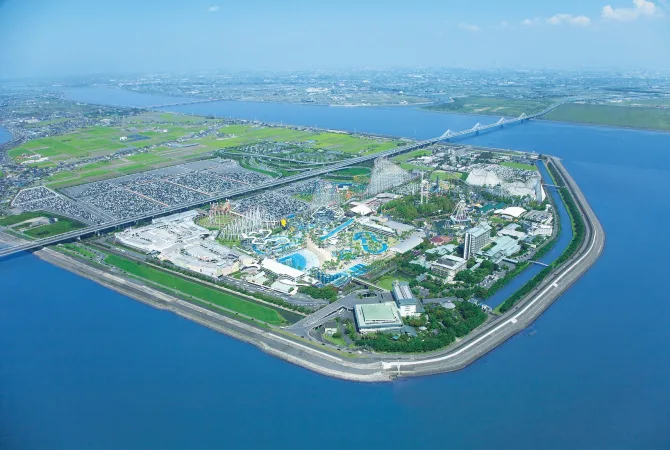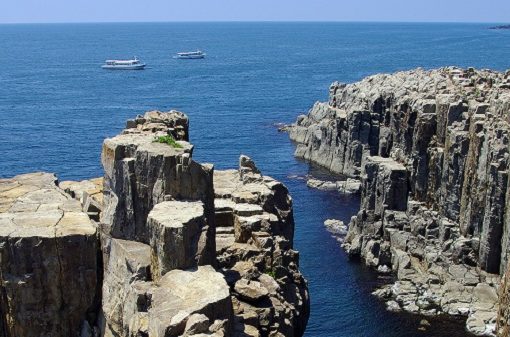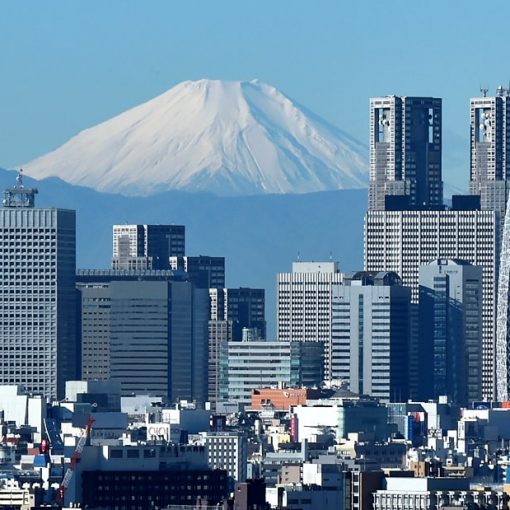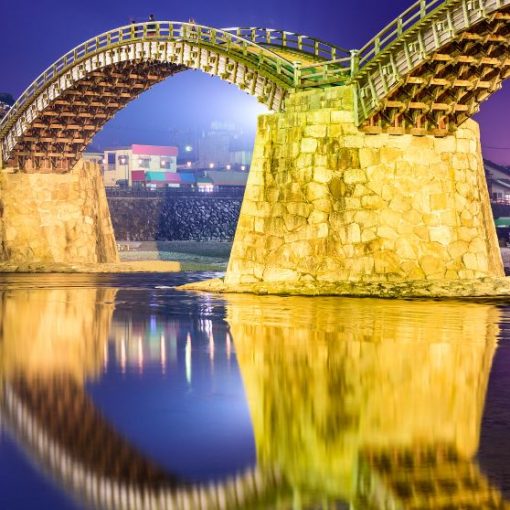Japan is rich in legends and fairy tales, which often enrich the experience of traveling to certain regions. Many are associated with specific areas, such as Momotaro (Peach Boy) in Okayama Prefecture, but more often than not, most areas have their own assortment of local folklore.
Naturally, northern Kyoto prefecture, especially near the sea, has its own stories. The stories below are an introduction to the myths and legends associated with important places. Think about them the next time you visit any of the places below – they can make your trip even more special!
Amanohashidate, Miyazu

Located in the scenic area of northern Kyoto, Amanohashidate is a 3.6 km long sandbar that spans the mouth of Miyazu Bay. Surrounded by a dense forest of thousands of pine trees and white sand beaches, the picturesque sandbar has inspired Japanese scientists, artists, and landscape gardeners for centuries, and is today considered one of Japan’s three scenic spots.
The myth associated with Amanohashidate is central to this fascination. The creation myth of Japan centers on the goddess Izanami and the god Izanagi, whose divine union led to the birth of this land. Tango Fudoki, an early historical chronicle of the Tango region, tells the story of how Izanagi used a ladder or “floating bridge of heaven” (Ama-no-Ukihashi) to visit Izanami on earth. It’s unclear if he tripped on the ladder or if it just tipped over, but it fell from the sky into the sea, transforming into Amanohashidate. Despite the minor detail that they are brother and sister, this folk tale tells how the sandbank became known as a favorable place for lovers.
In addition to walking along the sandbank, visitors usually participate in mata-nozoki: looking at Amanohashidate upside down from under their feet. Heaven and earth are upside down, and the sandbar turns into a magnificent dragon snaking across the sky. This is known as hiryukan, or “flying dragon view”. Amanohashidate View Land Park and Kasamatsu Park offer beautiful views of the sandbank and the bay.
Motoise Kono Shrine
Near the northern tip of Amanohashidate, on the way to the Kasamatsu Park Viewpoint, is one of the region’s most important shrines, Motoise Kono Shrine. Perhaps partly due to its location, this temple has long been associated with the ocean; today the main deity enshrined here is Umisachi-hiko (or Hoderi-no-mikoto), the deity of the sea.
However, it is notable for having once kept Amaterasu, the goddess of the sun in Shinto mythology and one of the descendants of the creator god Izanagi, before being placed in the Ise Grand Shrine in Mie Prefecture. The legend also suggests that the goddess of agriculture, Toiuke-Okami (or “Toiuke-bime-no-kami”), was kept here in earlier times. Prior to this, Toyoke-Omikami was the main deity at the Hinumanai temple mentioned in the following entry; in the end, Amaterasu called her to Ise.
Thus, the name of the temple “Motoise” or “Origin of Ise” is a reference to its glorious past. Although photography is not allowed on the grounds of Motoise Shrine, visitors who have also been to Ise will note architectural (and overall visual) similarities to said shrine, such as the ten logs of the katsuogi roof and the gem-shaped suede on the railing.
Tsuki no Waden, Mineyama-cho, Kyotango
It would be hard to underestimate the importance of rice in Japanese culture. Whether used as a currency or as a status symbol, it has been the very foundation on which the wheels of the Japanese economy have been turning for much of the last two-plus thousand years. Therefore, it is not surprising that there are folk tales about how rice cultivation appeared in this country.

Tsuki no Waden, an unassuming rice field of about 7 square meters near the Hinumanai Temple in Kyotango City, is a site associated with this story. While there are no official translations, its name means something along the lines of “Moon Shaped Rice Field”, a reference to its semi-circular shape. In Engisiki (a 10th century book on laws and customs), this place is called “Taniva” or literally “rice field garden”.
According to Tango Kujiki (Old Tales from the Tango Region), this is supposedly where Toyoke-Omikami first soaked rice seeds and planted them, then presented the harvested crop to Amaterasu. Its association with the divine and the supernatural continued for a long time: although the field was used to grow rice during the Edo period, local lords avoided imposing an annual tribute on the crop due to a supposed “curse”.
It is likely that this is not its original location; the deposit was moved sometime in the 20th century due to land consolidation and was eventually abandoned. However, the city of Kyotango and the Nika area led the redevelopment of Tsuki no Waden in 2013 to celebrate the area’s folklore history.
Similar tales and places do exist in other regions of Japan, in which the origins of rice cultivation are attributed to other deities. But, in all likelihood, rice was brought by people who traveled across the sea from China and eventually settled in Japan!




